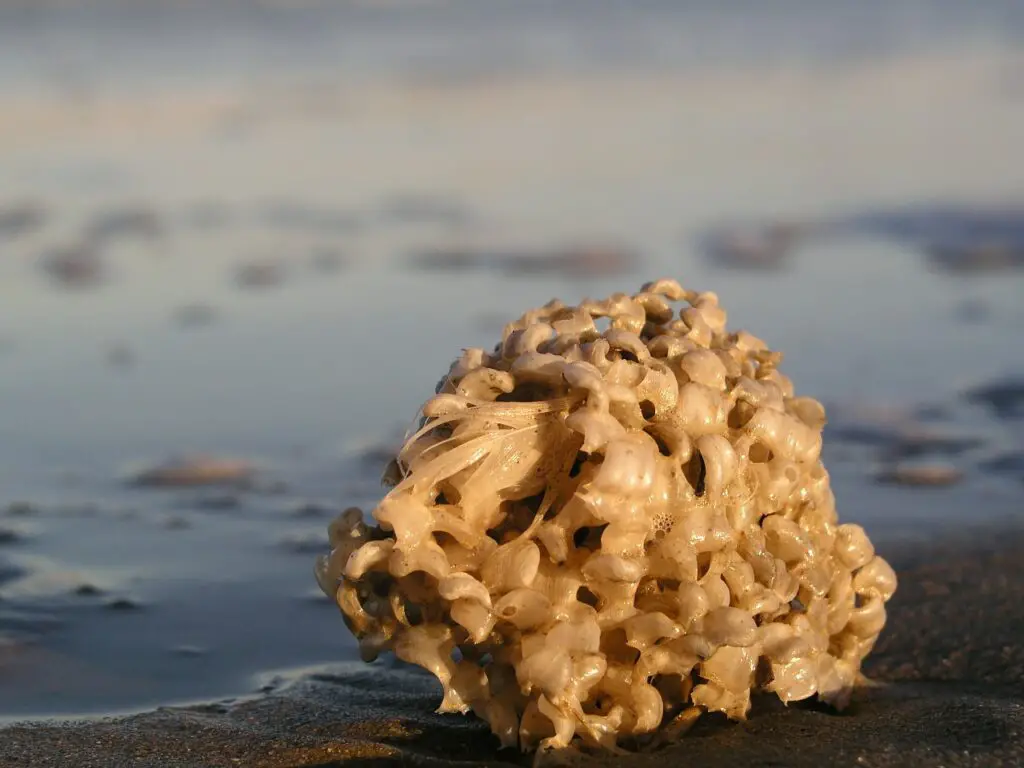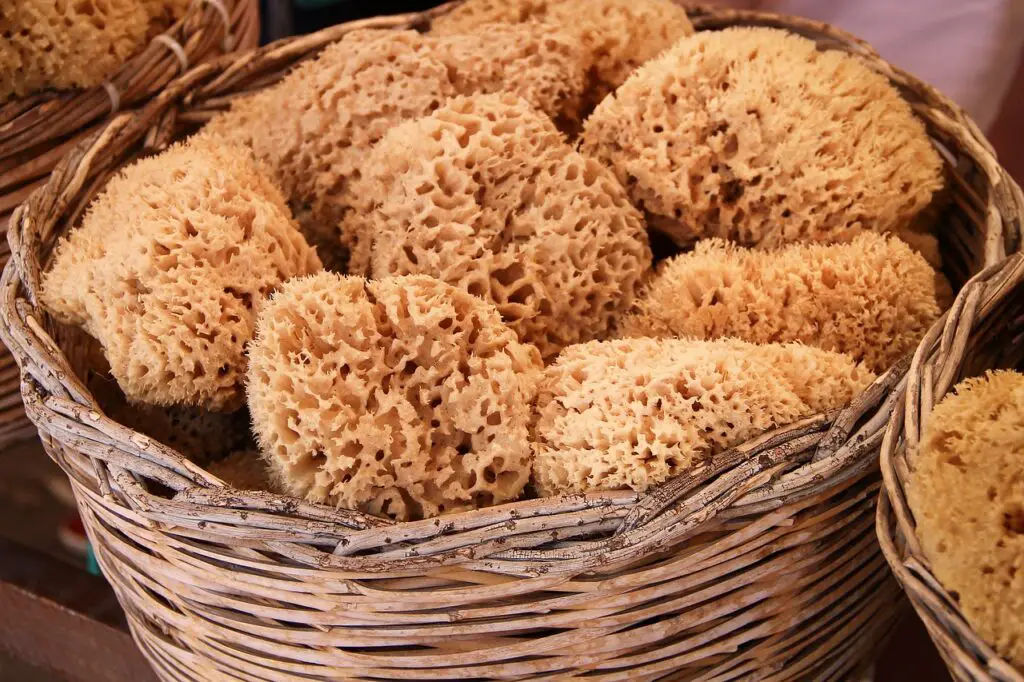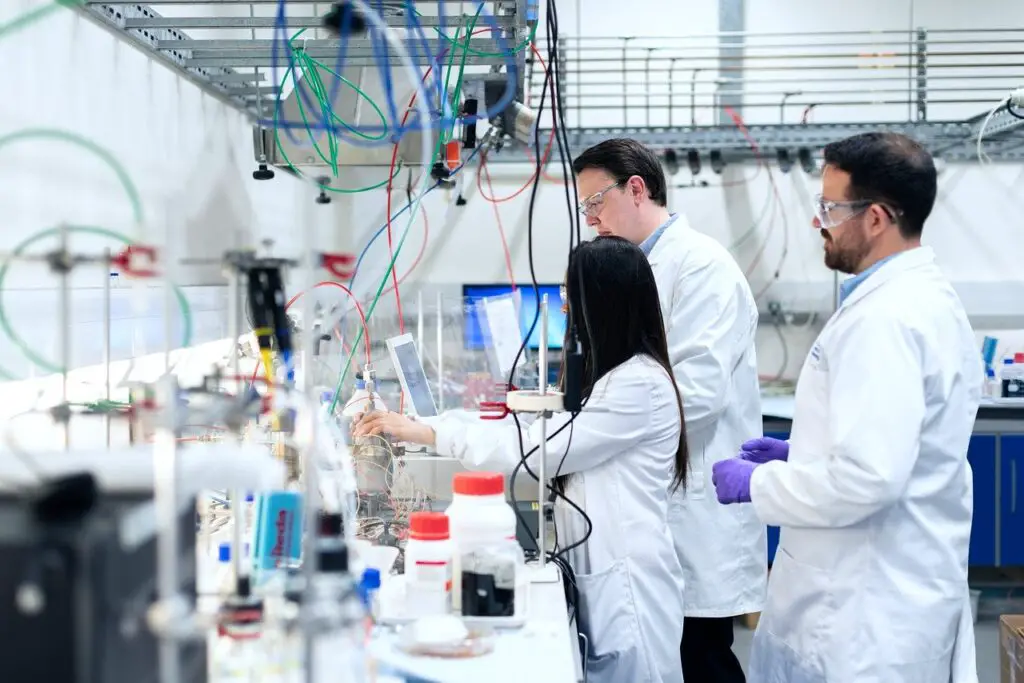Biological, Economical, And Medicinal Importance of Sponges
Phylum Porifera consists of the most primitive multicellular animals, called Sponges.
They are also referred to as ‘pore bearers’, as their body walls contain tiny pores that are the basic structures in their functional activity.
Sponges are very small, delicate (very fine in texture or structure), sessile (fixed at one place), branching, colonial, and marine poriferas that possess the cellular level of body organization.
Due to their simple life form, people do often ignore sponges.
Sponges are a very much important to this biological world. They are very much important in nutrient cycles in the coral reef systems and highly help in supporting the marine food web.
Economically they are treated as protective habitats for animals like crustaceans, molluscs, small fishes, etc. providing them food as well. Men use the skeleton of sponges for washing and bathing as well.
Sponges are also used for Medicinal use in the preparation of various antibiotics, anticancer, antifungal, immunosuppressive drugs, and all.
↓ ↓ ↓ ↓ ↓ ↓

List of Biological Importance of Sponges
1. Sponges are important in nutrient cycles in coral reef systems
Sea Sponges are very much important in the cycling of the various nutrients like carbon (C), nitrogen (N), phosphorus (P), and sulfur (S) in the marine ecosystem.
The sponges show varied symbiotic relationships with other microorganisms that majorly help by contributing to the various nutrient cycles in the coral reef ecosystem.
The sponges contribute highly in turning the coral reefs as the ‘rainforests of the sea.’ They make up the benthic communities of the various nutrient cycling steps.
Because of their huge abundance in and near the coral reefs, a high number of associated microbes show great symbiotic relationships with them.
Thus, they not only show the ability to filter large volumes of water, but sponges also have the potential to be the key organisms in benthic-pelagic coupling and nutrient cycling in coral reef ecosystems.
They do also readily help in carbon fixation by photosynthetic symbionts. In Nitrogen fixation, atmospheric nitrogen (N2) can be fixed into ammonia (NH3) by sponge bacterial symbionts.
Sponges have also been seen to release bioavailable Phosphorus in the marine ecosystem. Also during the Sulfur cycle, S oxidation, S reduction, and possible coupling reactions are seen to have occurred between the sponges and the specialized symbionts that utilize that sulfur.
2. They help in maintaining deep-sea biodiversity
Sponges are really larger and some are even massive than the corals. They are huge participants in the coral reef ecosystem by providing habitat, food, and safety to the various other organisms of that ecosystem.
A diverse sponge population can affect water quality on the reef as the sponges filter water and make it clean, collect bacteria, and process carbon, nitrogen, and phosphorus.
These all can lead to the encouragement of the growth of the various organisms which are essential for marine life.
And moreover, it is also important to be noted that when large numbers of sponges occur together, they are considered indicators of vulnerable marine ecosystems (VMEs), as they likely harbour a rich community of associated animals.
They directly or indirectly take part in the various biological processes that promote the growth of varied bio-diversity altogether.
That’s also why sponge culture is done highly along with fish culture to promote the growth of the various fishes and other related organisms that are helpful both economically and biologically like brightly coloured fish, worms, crabs and octopus.
3. They highly support the marine food webs
A food web is a sum total of the various interconnected links amongst the food chains prevailing in an ecosystem.
Here, in the marine food web ecosystem, the majority of the food chains are in one way or other is influenced by the presence of the sponges.
Just like if you study the sponges that grow at the bottom of the sea bed mostly in the coral reef locations, you will find that as the sponge grows and attaches to the sediment, material accumulates around the base of the sponge attracting other sessile organisms such as Cnidarian colonies.
Most sponges are detritivores, that is they eat organic debris particles and microscopic life forms that they filter out of ocean water.
These Cnidarian colonies are directly or indirectly dependent on these sponges for food. Some often feed on these sponges as a regular source of food.
As the Cnidarians feed on the sponges, the energy is passed to the next trophic level.
Now next, when the predators like sealike starfish, sea slug, etc. feed on the cnidarians the energy is further passed to the next trophic level.
In this way, the energy flows in the various food chains and altogether on the wood web. The sponges highly contribute a lot to it.
4. Sponge can lead to a lot cleaner fish farming
Sponges are really helpful in fish culture as well. The co-culture of sponges and fishes can create a win-win situation for both that will biologically benefit the fishes in its growth.
In marine aquaculture, the sponge acts as a natural water filter that could be used to clean polluted water. And so, it always has been a better option is to culture them near the fish cages.
They are also beneficial for the nutrient cycle because they make it possible for the flow of various essential nutrients to the fishes by means of a food chain.
Sponges can also promote the growth of fishes by acting as biofilters and bioremediators.
Sponges are huge habitats and nursery grounds for various reef organisms and fishes alike. The small fishes that grow in close association with the sponges are in turn eaten by the larger fishes thus promoting an overall fish-culture environment.
5. They are natural pollution filters
If you are thinking about getting rid of water pollution then, sponge culture is the best fit for you.
The water canal system in sponges invariably filter a large volume of seawater and potentially accumulate heavy metals and other contaminants from the environment. This makes the water free from oil, polluting microorganisms, etc.
Do you know that sponges can live for hundreds to thousands of years? Some even have a lifespan of more than 2,300 years.
Moreover, they also have the power to regenerate their body parts which are also too beneficial.
They due to their long lifespan have the capability to accumulate anthropogenic pollutants such as metals over a long period.
The extra and intra-cellular spaces within the body tissues of the sponges allow a large number of microorganisms to stay inside.
Sponges collect bacteria when they filter the water around them. So, that’s why sponge-associated marine bacteria are also used as indicators of heavy metal pollution.
Moreover, the sponges may also be able to turn sea dissolved ammonium into nitrogen gas that is then released into the atmosphere. This process would lower excess nitrogen levels in the seawater, also preventing harmful ecosystem changes.

List of Economic Importance of Sponges
1. They are natural commensals
Commensals are those organisms that follow commensalism which is actually an association between two organisms where one gets benefitted and the other derives neither benefit nor harm.
Sponges serve as secure houses for several crustaceans worms, molluscs, small fishes, etc. which seek protection in them against the predators.
These animals not only get the habitat but also get a rich food supply from the water circulating into the sponge body. Some animals even spend their whole life inside the sponges because of easy food availability and protection.
These animals are known as the Commensals because they don’t harm the sponges but they themselves are benefitted as a whole from the association.
Commensalism does highly helps in the growth of marine fish and aquaculture industry.
2. They are a natural source of food for marine life
Sponges typically grow on or near coral reefs. They digest large particles and tiny organisms that flow through the water current and enter their canal system.
Using the same canal system water pathway mechanism, sponges take the organic matter that is cast off by coral and algae and recycles it into food and energy for their survival.
These sponges are now consumed by cnidarians or by other larger organisms like snails and crabs, smaller fishes. This leads to the flow of food energy next from the sponges to the larger organisms.
They are various sponge-eating fish species in the seas and oceans, and so sponges act as a very good source of food for them.
Moreover, the organisms living inside the sponges also get food easily due to the canal system in the sponges.
Thus, the sponges are a natural source of food for marine life. They also allow the coral reefs to thrive in otherwise inhospitable waters and encouraging the growth of various marine bio-diversity.
3. Used as Bathroom Accessory
Yes, various bathroom products are made from sea sponges. Mostly the body scrubber sponge is made from sea sponges.
Synthetic sponges contain various harmful chemicals that can harm our skin, whereas natural sponges are safe and healthy to use having no potentially harmful chemicals.
They are also used in making various products that are used in scrubbing and rubbing floors, furniture, etc. as well.
The spicules which are the skeleton system of the sponges are dried and utilized in the making of various products like bathroom scrubbers that are able to clean our body during bath time.
These are also good at soaking water and so are used in the various shampoo, soap, and body cleanser products as well.
4. Used for home decoration & painting
Getting a little color on your walls is always a great idea when you’re looking to bring a new sense of life to a room. Natural sponges are a lot more awesome alternatives for it than the synthetically produced ones.
Sponges are good at soaking paints and so when they are pressed against any surface to paint, the color equally gets distributed and layers itself evenly without creating any uneven layers.
The sponges have great Surface Tension. And so because of this purpose, various small square-shaped sponges are attached to the surface of wood, glass, metal tabletops, etc. to protect those scratches and damage.
Various decorative produces like synthetic cushions, beads, frames, etc. are produced in factories by shaping the dead sea sponges.
5. Other economical importance of sponges
- Sponges are used for the purpose of bathing, washing, polishing, scrubbing the floor, padding shields, and armour, etc.
- Some even use them to absorb fluids to be drunk later on.
- Sponges also find great applications in the ceramic and pottery industry. They are indeed an essential part of Pottery making.
- Sponges of inferior quality are often used for stuffing the sound-absorbing walls, garments saddles, cushions, furniture, etc.
- Sponge painting is also used in the most popular faux finishing technique that applies glaze over the paint colour.
- In the glass industry, sponges are used in wiping and cleaning hot glass.
- Some sponges such as Venus’s flower baskets are of great ornamental interests because they build up a beautiful latticed skeleton of ‘spun-glass’ in the form of a cylinder.
- These are also used as Ice Packs in the icecream industry for storing ice-creams. Ice packs are made by freezing a thoroughly-saturated wet sponge inside a zip-top bag. As the ice melts, the moisture stays trapped in the sponge, minimizing drips and mess.
- Some sponge species are of great economic importance as their siliceous spicules form large flint deposits.

List of Medicinal Importance of Sponges
1. Used to prepare Anticancer agents
Excessive amounts of secondary metabolites are produced by marine sponges and their symbionts. These metabolites find their applications in the various anticancer-related drugs.
Typical examples of marine anticancer drugs are eribulinmesylate, spongothymidine, spongouridine, etc. These compounds are clinically tested and a majority of them have shown success in phase III of the clinical trials.
Sponges like Halichondria okadai, Tectitethya crypta, etc. are the most important species of sponges that are used in the production and experimentation of various anticancer drugs.
Moreover, marine sponges are an important source of terpenoids, macrolides, sterols, and alkaloids.
The possibility of the development of new anticancer drugs for curing or reducing cancer is promising. The antitumor compounds derived from the sponges can play a remarkable role in the future to treat cancer.
2. Used to prepare Antibacterial active agents
Marine sponges are the richest source of Antibacterial active agents. The various compounds extracted from sponges are shown to have bioactive metabolites with cytotoxic properties.
Several new promising bioactive candidates have been discovered from marine sponges and around more than 800 antibiotic constituents are reported from them that are all antibacterial in nature.
During the various experimental and clinical tests it was seen that these bioactive compounds cause the death of the various bacteria and other microorganisms when inputted in the human blood. Thus, showing the presence of antibacterial active agents.
Axinella sp., Acanthostrongylophora sp., Spongosorites sp., etc. are some of the popular species of marine sponges that are used to extract antibacterial agents.
No such final products are created yet, and it is still in the experimental phase.
3. Used to prepare muscle relaxants
Continuous muscle activation caused by disturbances in neuromuscular communication can result in muscular stress. This stress causes a lot of pain.
Bioactive compounds from the various species of marine sponges are used to prepare muscle relaxants that cause IP3 inhibitor, uterus relaxation, etc.
Bioactive compounds like Xestospongin C isolated from marine sponge Xestospongia sp. is a potent α-receptor’s IP3 inhibitor and Ca2+ (calcium channel) blocker.
IP3 is a secondary messenger molecule used in muscular signal transduction and it diffuses throughout the cell and increases the Ca2+ level and thus resulting in the cause of smooth muscle contraction.
Xestospongin C blocks the IP3 thus inhibiting Ca2+ leading to muscular relaxation.
S1319 isolated from a Dysidea sp. is another substance with a remarkable muscle-relaxing capability. Its mechanism of action is to agonist the β-Adrenoreceptor.
β-Adrenoreceptors are of two types β-1 and β-2. β-1 receptors are available in the heart that increases heart rate, myocardial contractility, and increases conduction velocity. While β-2 receptors are available in the lungs and uterus responsible for dilation of bronchial smooth muscles, dilation of blood vessels in skeletal smooth muscles, and relaxation of uterus muscles.
S1319 drugs have the uterus relaxing capability which can be therapeutically used duiring the infant’s delivery time.
4. Other medicinal importance of sponges
- Sponges like Cryptotethya crypta, Aaptosa aptos, etc. are used in the production of various antiviral drugs.
- Antifungal compounds are isolated from marine sponges like A. brasiliensis, Acanthostrongylophora sp., L. variabilis, etc.
- Manzamines are undoubtedly the most important and potent antimalarial alkaloids isolated from marine sources like the Okinawan sponge belonging to the genus Haliclona.
- Deepwater sponges like Agelasfla bellrform, Callyspongia difusa, etc. are used to produce various sponge-derived immunosuppressive compounds.
- Marine sponges like F. cavernosa, Psammocinia spp., C. lissosdera, Euryspongia spp., etc. are used to prepare various Anti-inflammatory compounds and their derivate drugs.
